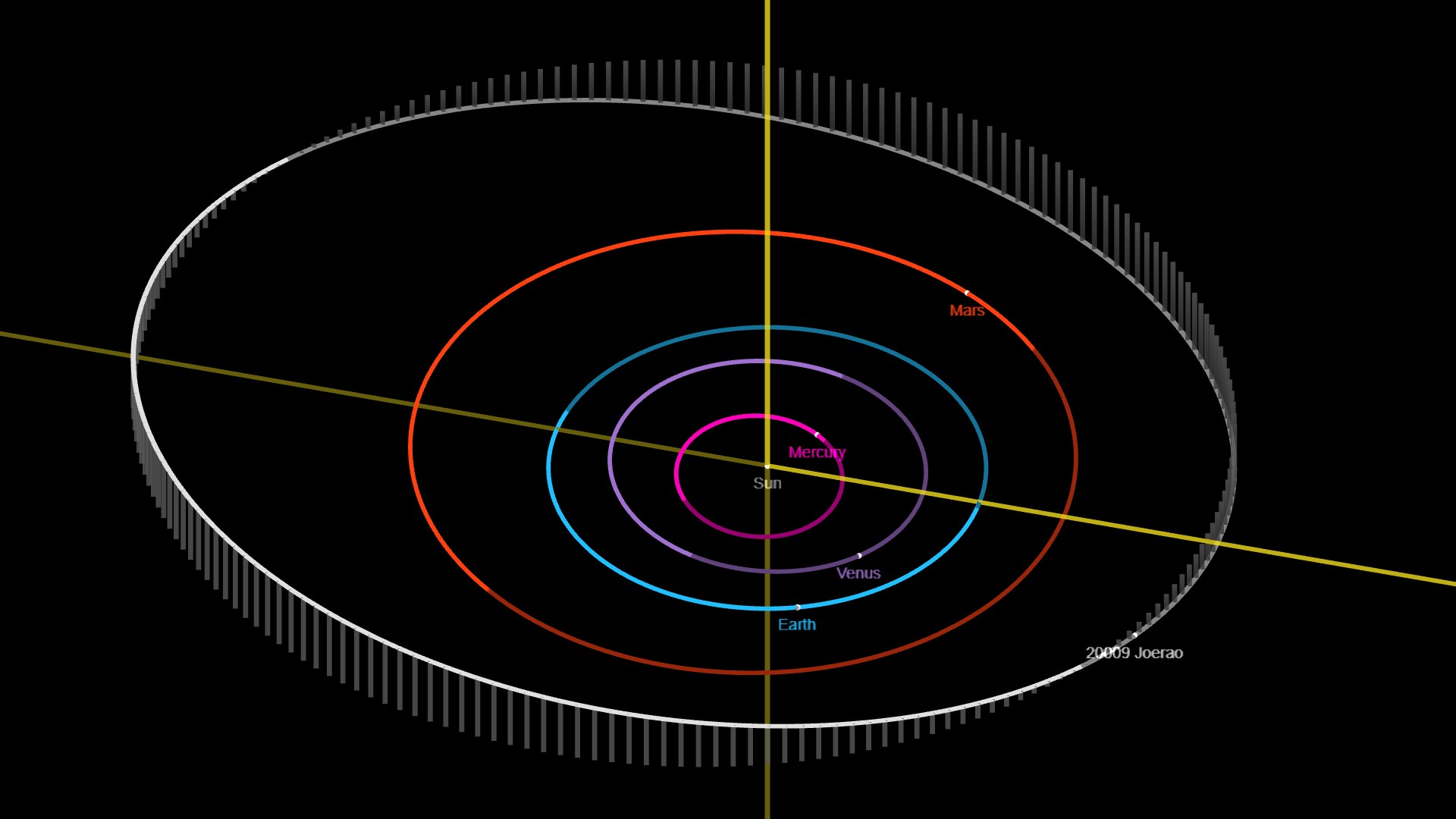What's it like to have an asteroid named after you? Our night sky columnist Joe Rao explains
20009 Joerao is circling the sun between the orbits of Mars and Jupiter.

Joe Rao is no stranger to the night sky.
The veteran meteorologist and eclipse chaser has served as an instructor and guest lecturer at New York's Hayden Planetarium. He also write about astronomy for Natural History magazine, the Farmers' Almanac and other publications, including Space.com, for which he serves as skywatching columnist. Aside from his astronomy outreach, Rao is an eight-time Emmy-nominated meteorologist who brought weather forecasts to the Putnam Valley region of New York for over 21 years.
To honor his dedication to bringing the wonders of the night sky to the public, Rao was recently honored with his very own asteroid — at least in name. The International Astronomical Union's (IAU's) Working Group on Small Body Nomenclature recently named the asteroid 1991 OY "200009 Joerao" after the meteorologist and astronomy educator.
Space.com caught up with Rao to learn how it feels to have an asteroid named after him and to learn more about the distant space rock.
Related: What are asteroids?
Space.com: How was the asteroid discovered?
Joe Rao: It was discovered at the Mount Palomar Observatory on July 18, 1991 by astronomer Henry E. Holt, who was likely using the 48-inch Samuel Oschin Telescope developed for sky surveys.
Get the Space.com Newsletter
Breaking space news, the latest updates on rocket launches, skywatching events and more!
It was initially cataloged as 1991 OY. Holt was probably photographing a particular region of the sky and, while tracking the stars, the asteroid, moving in its orbit through space, created a short trail on the photographic image.
Space.com: How was the name chosen, and by whom?
Rao: Asteroids are typically cataloged by the year that they were discovered and assigned a letter or letters based upon the month and day that it was discovered. Currently, the known asteroid count is 1,298,388. 1991 OY was #20009.
An asteroid can be named for someone or something, but the process must begin with someone or some organization writing a short citation, listing a few pertinent facts about the potential moniker that will be attached to an asteroid. That citation will then be judged by a 15-person committee from the International Astronomical Union.
I have since found out that the persons responsible for getting 1991 OY named for me were Edwin and Imelda Aguirre, who are assiduous amateur astronomers living in New England. I have known them for about 20 years, and, after I had gone through the machinations of getting an asteroid named for a long-time eclipse-chasing friend of mine (astronomer Dr. Glenn Schneider), Edwin and Imelda felt that I too deserved to have an asteroid named for me, based chiefly on my many years of astronomy outreach with the general public.
So they wrote up a citation and passed it on to Mr. Daniel Green of the Central Bureau for Astronomical Telegrams in Cambridge, Massachusetts, who in turn forwarded it to the IAU committee for consideration.
The announcement was made in the Working Group Small Bodies Nomenclature (WGSBN) bulletin dated on Monday, July 3. When I got the news, we were having a family gathering at my home to celebrate my son's third wedding anniversary, my daughter's birthday and also, Independence Day. So for the asteroid being named for me that same day, it was like the icing on the cake!

Space.com: What can you tell us about this particular asteroid? Where is it currently?
Rao: All details regarding its orbit can be obtained by consulting its listing in the NASA Jet Propulsion Laboratory Small-Body Database.
20009 Joerao is a Main-Belt asteroid, or in other words, it is circling the sun in an orbit where most asteroids are located, between the orbits of Mars and Jupiter. Its orbit is inclined 8.6 degrees to the orbital plane of the Earth, and it circles the sun once every 4.087 years.
Most Main Belt asteroids are no bigger than 0.6 miles (1 km) across.
Finally, if you're concerned that 20009 Joerao might someday collide with Earth, forget it. It can never get closer than 188.07 million miles (303 million km) from the sun and 93.99 million miles (151 million km) from the Earth. So, we're safe!
Currently 20009 Joerao is in the constellation Virgo. It is exceedingly dim at around magnitude +19. That's approximately 158,000 times fainter than a star at the threshold of unaided-eye visibility. Only large observatory telescopes located under pristinely dark, starry skies have any real chance of capturing an image of it.
Space.com: How does it feel knowing your name is assigned to something hurtling through the solar system?
Rao: I'm so honored and very pleased that, with the help of Edwin, Imelda and Dan, and with the blessing of the IAU that I now have my name — in perpetuity — assigned to a celestial object.
My only regret is that my mom, who died last January, did not live to see this happen. From the time I was a very young boy, she always encouraged me to study science and purchased books on space and astronomy for birthday and Christmas gifts, as well taking me on visits to the Hayden Planetarium in Manhattan. I'm sure, however, she's now watching all this from a different sector of the universe!
Joe Rao serves as an instructor and guest lecturer at New York's Hayden Planetarium. He writes about astronomy for Natural History magazine, the Farmers' Almanac and other publications.
Join our Space Forums to keep talking space on the latest missions, night sky and more! And if you have a news tip, correction or comment, let us know at: community@space.com.

Brett is curious about emerging aerospace technologies, alternative launch concepts, military space developments and uncrewed aircraft systems. Brett's work has appeared on Scientific American, The War Zone, Popular Science, the History Channel, Science Discovery and more. Brett has English degrees from Clemson University and the University of North Carolina at Charlotte. In his free time, Brett enjoys skywatching throughout the dark skies of the Appalachian mountains.









